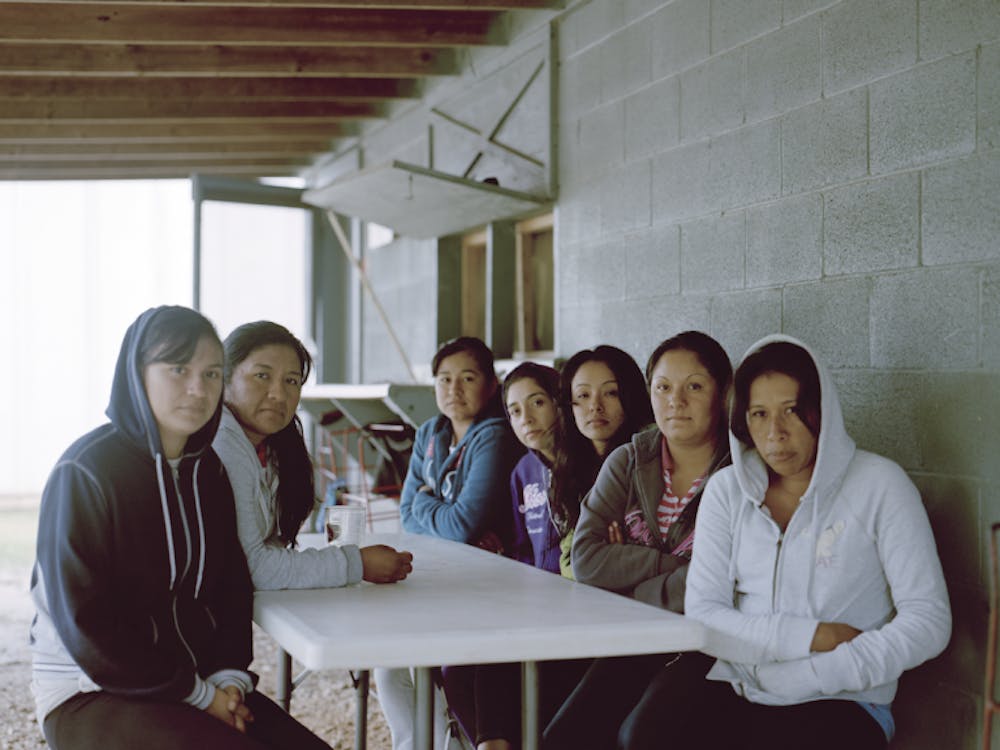The American South is an ever-changing landscape, its growing communities and dynamic businesses pushing the region away from strict definitions. With a dark history and rich culture, it’s convenient to describe the South as nothing more than a land of sweet tea and bitter discrimination. The New South, however, presents a progressive transformation from 19th-century Dixie. This fall, “Southbound: Photographs of and about the New South” illustrates the heartbreaking stories of the past and pluralistic identity of the present.
There are two installations of the “Southbound” exhibit: “Flux: Nostalgia vs. the Future,” presented in Durham’s Power Plant Gallery, and “Home: How We Make Ourselves,” located in NC State’s Gregg Museum. The two installations work in conjunction to highlight the comforts of Southern culture as well as the similarities between its dynamic past and hopeful present.
Organized by Randall Kenan, author and professor of English and comparative literature at UNC-Chapel Hill, this iteration of “Southbound” artfully presents the issues facing 21st-century America. Presented with more than 200 photos from over 50 artists, Kenan had to answer: Which photos represent the New South? Which images — which stories — portray the values of the modern era?
“Teaching about the South, you have certain ideas, certain preconceived notions, and I was trying to make them fit,” Kenan explained. “I had to listen to the photos. I had to see what jumped out at me.”
The product is a gripping, and nonetheless realistic, depiction of the modern South. All photos were taken after the year 2000, and this modernity only enhances the contrast between the rustic past and the increasingly urban present. Featuring photos of interracial couples, oil-ridden oceans and “Black Trans Lives Matter” protests, the collection displays an unmistakable awareness of the social, economic and environmental issues of today. But it does not neglect the influences of the past, as photos of Confederate reenactments, rural churchyards and rifle-adept women illustrate how Southerners still look to the past for guidance and self-understanding.
Kenan also wanted viewers to recognize the diversity of the modern South: “I was impressed by the inclusion of those not typically represented in the South,” he said. “The growing Latinx and Muslim populations are integral parts of Southern communities who deserve appreciation.”
The combination of Southern traditions with contemporary communities reinvents the Southern identity. One photo in particular, captured by photographer Tammy Mercure, shows a group of young girls sitting in anticipation for a dance recital. Despite coming from different backgrounds, the girls demonstrate a genuine sense of unity not uncommon in Southern communities. No matter how the appearance of the South changes, the feeling of Southern hospitality remains.
The “Southbound” project is not limited to photography. Online, viewers can discover poetry, essays, videos and a playlist revealing the diversity of artwork within the South.
“The phenomena of the New South can’t be captured in photographs alone,” co-curator Mark Sloan explained. “One medium [of art] wasn’t enough.”
The artistry of “Southbound” awakens both the eyes and ears — Durham-based musician and Southern musicologist Jake Xerxes Fussell created a playlist of 35 songs capturing the thoughts and emotions of the New South. This playlist includes titles across different genres and different generations, ranging from Walker Calhoun’s banjo-heavy folk hymn “Guide Me, Jehovah” to Lil Wayne’s rap “Tie My Hands,” which addresses black systematic oppression.
Poet Nikky Finney was commissioned to write in response to the “Southbound” photos, eloquently illustrating her perspective without any knowledge of the photographer, subject or location of each photo.
“If I had been locked in a cell with each of these photographs taped to the walls around me I know I would’ve eventually made it out alive because of the hope and the life that I found in this masterful collection of images,” Finney states in her piece. “I could have written a story about each and every one of these photographs had I had the time.”
For this exhibit, what defines the South is not bigotry but resilience. Changing the image of the region does not mean erasing its history, but rather embracing the ability to change the future. The New South — diverse, flourishing and empathetic — embodies an eagerness to care for all. The thought-provoking words and photos of “Southbound” exemplify this ambition, revealing how, in the words of Southern Gothic author William Faulkner, “The past is never dead. It’s not even past.”
“Southbound: Photographs of and about the New South” will be on display September 6- December 11, 2019 at the Power Plant Gallery.
Correction: A previous version of this article stated that this iteration of “Southbound” was curated by Randall Kenan. It has been corrected to state that Kenan organized this iteration. The Chronicle regrets the error.
Get The Chronicle straight to your inbox
Signup for our weekly newsletter. Cancel at any time.

